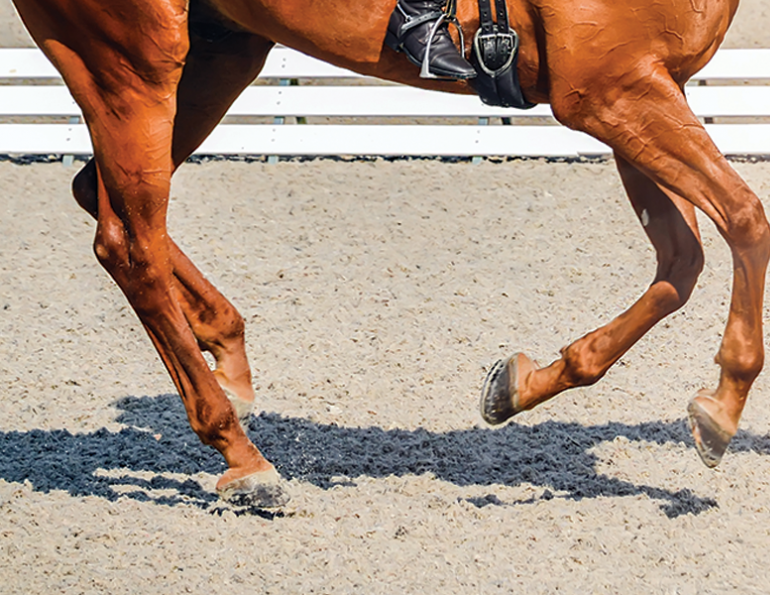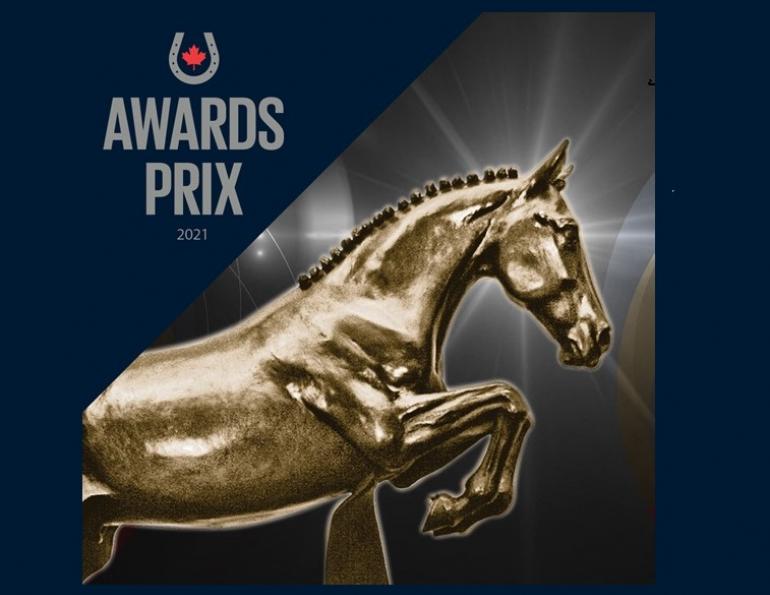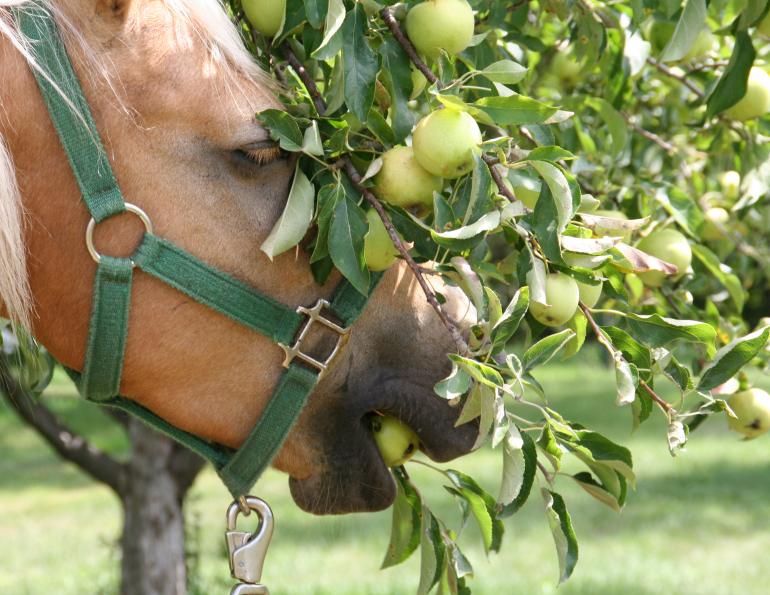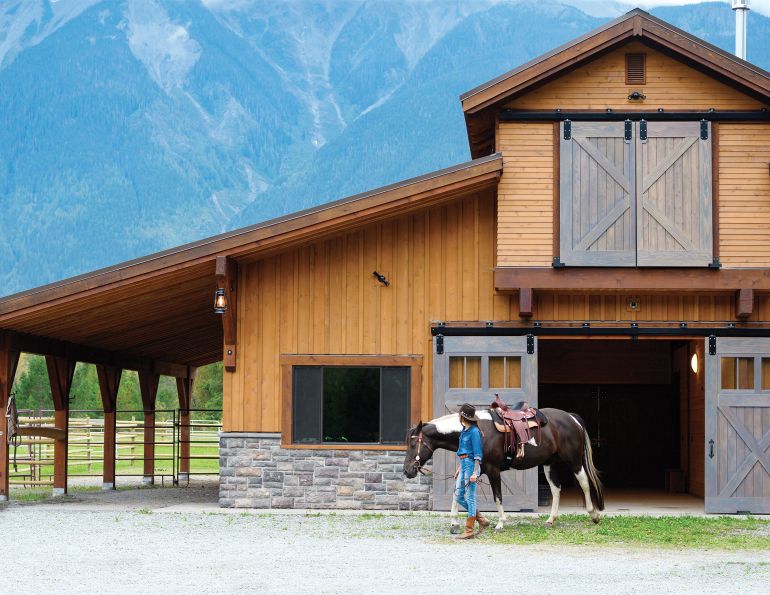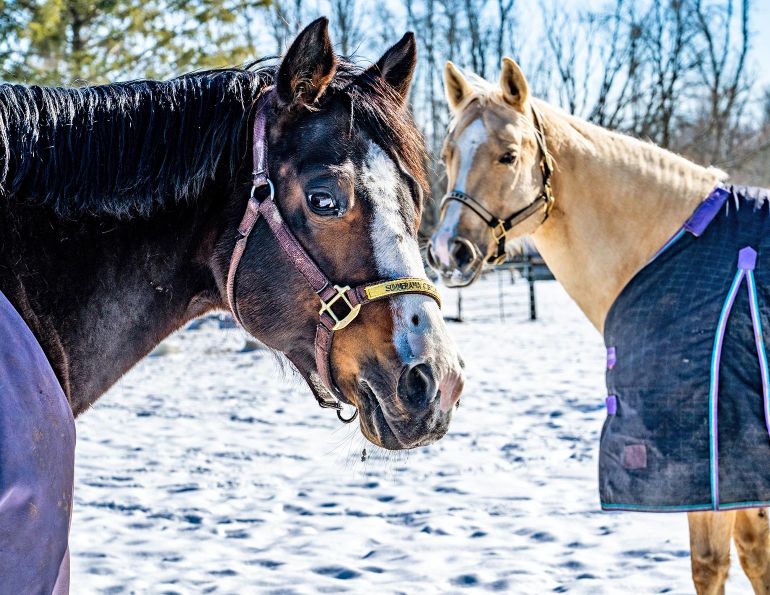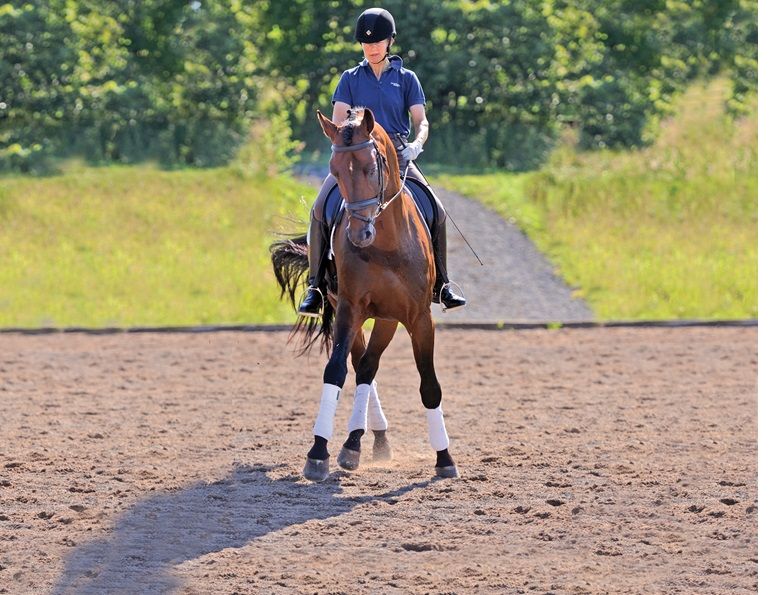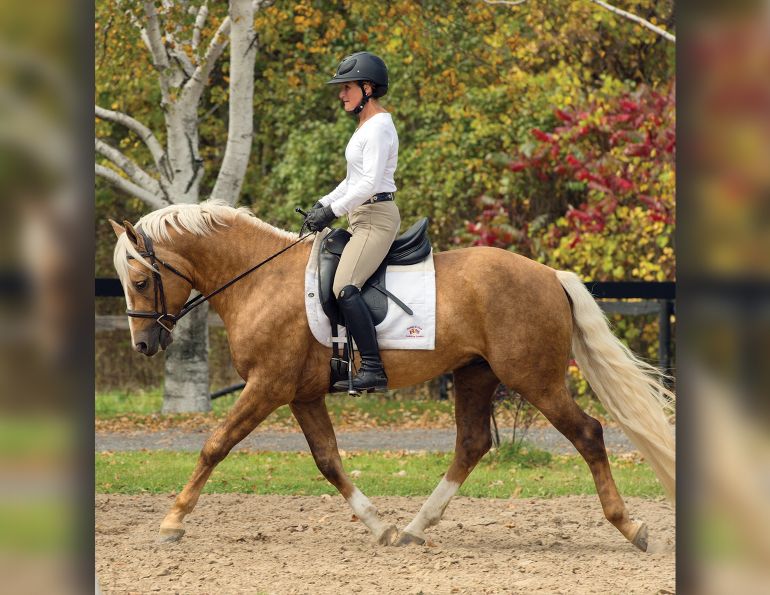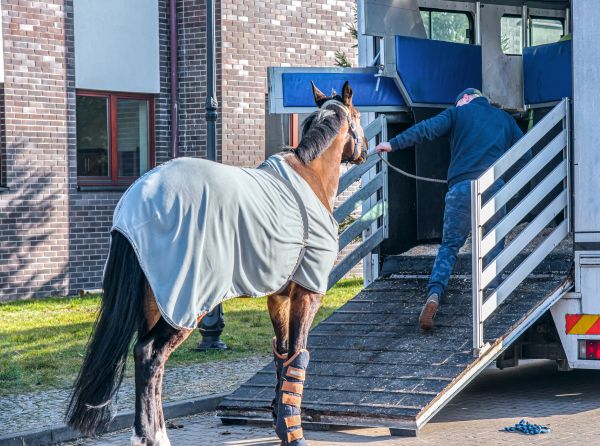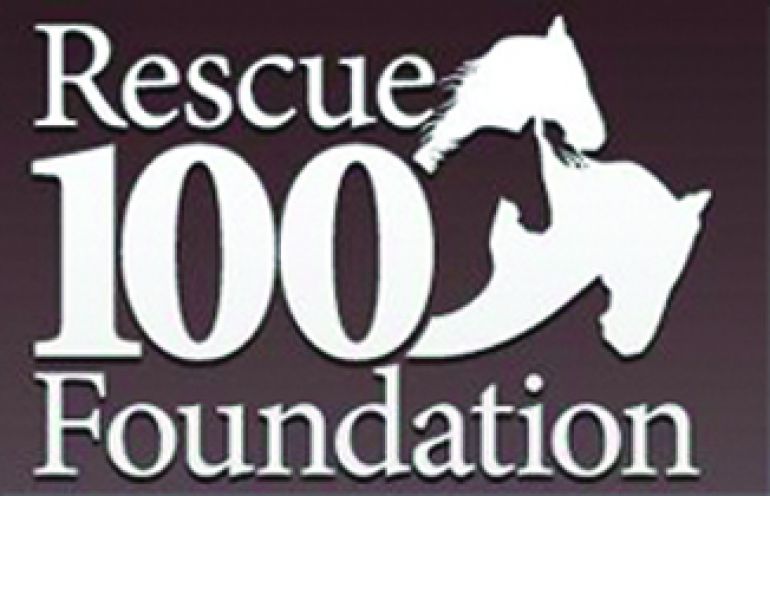Every Time, Everywhere
By Lindsay Grice, Equestrian Canada coach and judge
Wrong lead!
It’s one of the earliest alerts a young rider hears from her coach. One’s heart sinks to hear that same alert from the coach calling over the show ring rail.
The novice rider learns the outside leg back and kiss cue to canter but I’ve found that riders are often unsure why they should use this cue. Let’s break it down. We’ll review the phonics of teaching your horse to pick up the correct lead and some hints to help the rider recognize it.
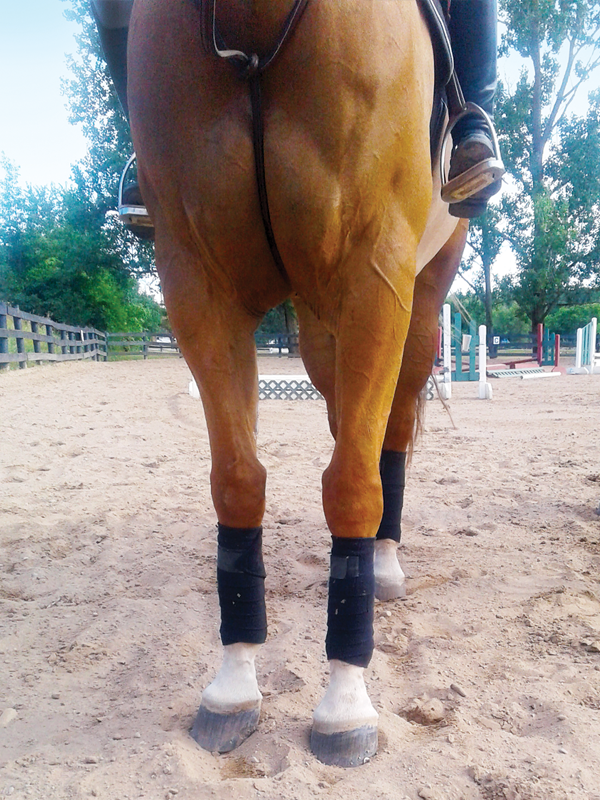
An imaginary straight line travels from the horse’s nose, though his legs. For the left lead, press the front feet to the right and back feet to the left of this line, flexing the head slightly to the left. As your horse becomes more advanced, the angle becomes almost imperceptible. Photo courtesy of Lindsay Grice
Early canter experiences are typically launched on a circle — the horse most naturally defaults to the inside lead. We introduce our horse to these signals:
- Outside leg behind the girth to initiate the gait and direct the haunches to the inside;
- Inside leg more forward at the girth to aid with impulsion and ready to block the front feet from stepping to the inside;
- Inside rein asking for slight flexion of the horse’s nose to the inside of the circle.
At this point, a horse believes the answer is simply canter. He’s not yet linking the position of his rider’s legs… to the position of his body… to striking off on a particular lead. However, after he’s getting the hang of stepping into the canter, it’s time to leave “Circle Elementary School” and head for “High School of the Straight and Narrow.”
Related: Lunging for Horse & Rider with Lindsay Grice
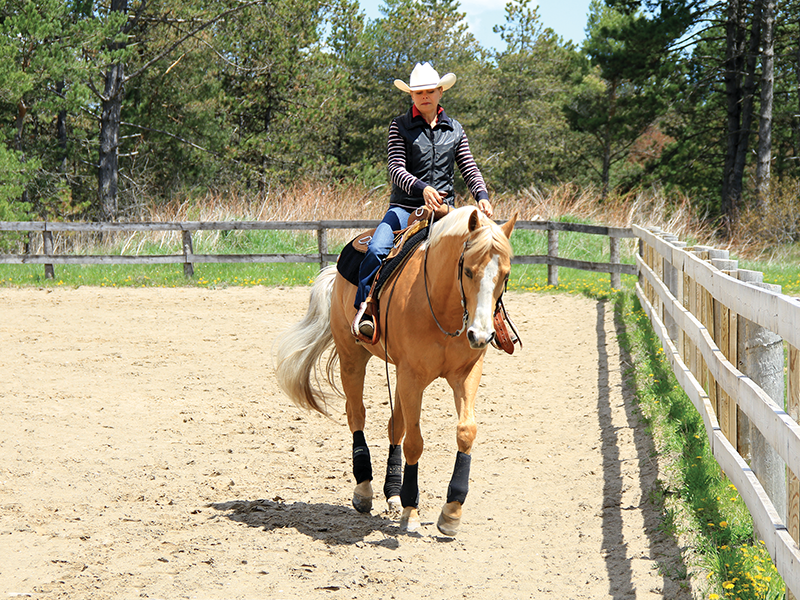
After your horse is getting the hang of stepping into the canter, it’s time to leave “Circle Elementary School” and head for the “High School of the Straight and Narrow.” Photo courtesy of Lindsay Grice
Graduate to canter transition on a line by angling to the fence-line at 45 degrees. It’ll make the inside lead seem like a logical option for your horse. However, remaining on the fence-line can be a hindrance to actual learning. Riders habitually gravitate to the rail before cantering and proceed around the outside. I see my share of well-worn paths around the arenas in which I teach.
There comes a time when we’ve got to take off the training wheels.
When a horse associates the location with a maneuvre rather than with his rider’s specific aids, the location has become part of the cue. The horse soon links the fence on his right with picking up the left lead. It’s classical conditioning. Anticipation can be used to the trainer’s advantage. By picking the same spot to initiate the canter, the horse begins to set himself up, lifting off without running off.
That said, when horses have their familiar routines upset, it stirs up anxiety. Anticipation may plant the seed, but keep it from taking root by teaching the aids separate from any environmental stimulus.
In every riding clinic, I meet someone struggling to find a fix for a “one-lead” horse. Aside from physical issues, lead preferences rarely emerge if a solid foundation is laid before initiating that first canter. Without the tools to influence a horse’s lead, it’s hit and miss. Every miss is practicing what you don’t want.
Here are the tools you’ll need:
1. Response to light cues. You’ll require tuned and reliable go-forward and slow-down cues. If your horse is dull to your legs, you’ll be chasing him into the canter. If he leans on your hands, you won’t be able to keep him organized.
2. Lateral control. Visualize your horse’s body parts as a train. Wrong leads result when one car derails — the haunches slip off the tracks to the outside or the shoulder bulges to the inside.
3. Longitudinal suppleness. The connected horse is flexible and compressible, like a spring. Connecting before transitioning is like picking up the telephone – are you ready? If his back is inflexible like a jump pole, when you apply your leg aid he’ll simply run through the trot, inevitably spilling onto his preferred lead. If you try to slow down, he’ll only break gait and trot.
Helpful Hints
1. Leave the curve. Pulling your horse in the direction of the turn with the inside rein can teach him to duck his shoulder to the inside, fishtailing the hind end to the outside. “Dropping the shoulder” is a recipe for an unbalanced transition at best and a wrong lead at worst.
2. Get a good start. Any transition is only as good as the quality of the gait preceding it. Straight, attentive, connected, and calm in the strides before are ingredients for an organized departure.
3. Position your horse for success. Your horse is in alignment when his nose is on an imaginary track in the dirt, with his front and back feet straddling it. However, for the left lead canter departure his front feet will be slightly to the right of the line with the hind slightly angled to the left. Flex his nose a whisker to the inside. As your horse becomes more advanced, the angle becomes almost imperceptible.
Related: Horsemanship - Are You Riding All Your Gears?
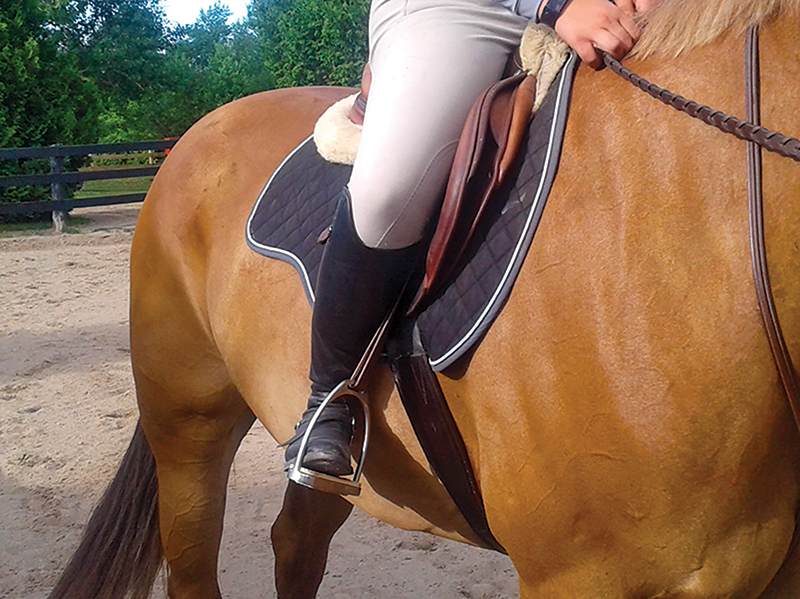
Make your rein cues clear and your legs aids discernibly different - at or behind the girth. Photo courtesy of Lindsay Grice
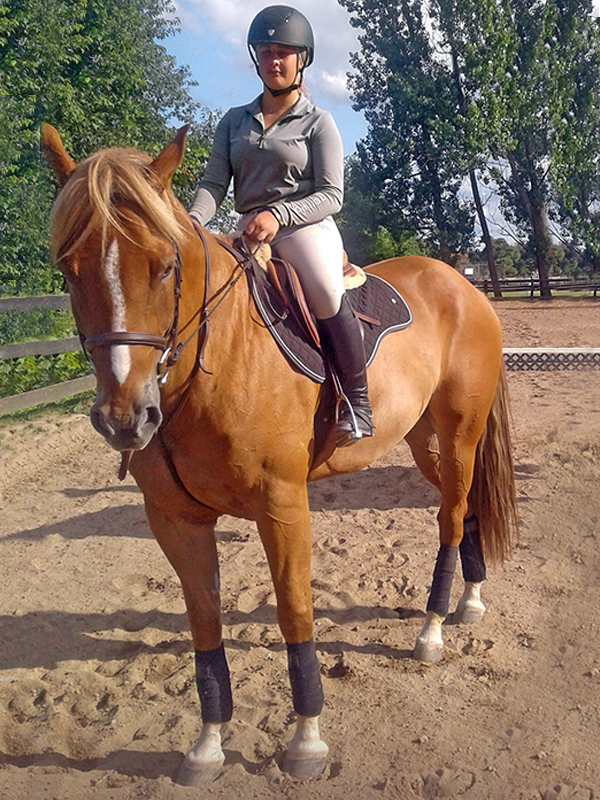
Flex his nose a whisker or two to the inside. Avoid too much inside rein. Photo courtesy of Lindsay Grice
4. Exaggerate the angle. If your horse is defaulting to the wrong lead, make it physically awkward to pick up the outside lead. Leg-yield toward the rail, away from your inside leg. Allow your horse’s shoulders to lead, hitting the fence-line on a clear angle. Just before you reach the rail, ask your horse to canter.

If your horse is defaulting to the wrong lead, make it physically awkward to pick up the outside lead. Leg-yield toward the rail, then hit the fence-line on a clear angle. Just before you reach the rail, ask your horse to canter. Photo courtesy of Lindsay Grice
5. Communicate clearly. As a teacher enunciates for his student learning English-as-a-second-language, softening his words later, it’ll help to be more demonstrative with your signals for the sake of clarity, refining them as your horse connects the dots. Make your rein cues clear and your legs discernibly different — at or behind the girth. Voice commands are useful tools to partner with the rider’s aids and take the guesswork out — Did she really mean canter? A kiss is fairly standard to signal the canter. Whatever voice cue you use, keep it consistent and clearly distinguished, e.g., cluck to accelerate.
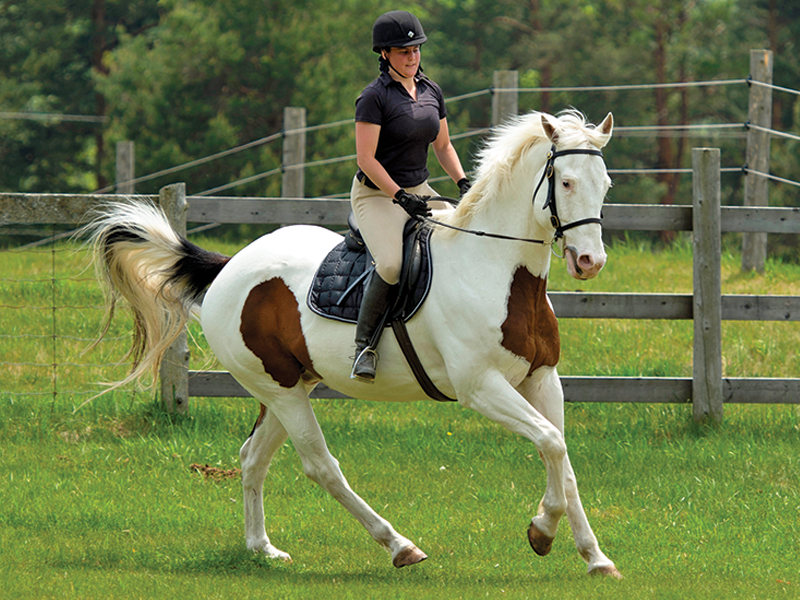
Position your horse for success and communicate your canter aids clearly and consistently. Photo: Clix Photography
6. Don’t communicate abruptly. Slide your outside leg back smoothly. Test before you ask. A sudden aid can become the boogeyman your horse dreads. If you “help” the horse by diving your body forward, adding a squeaky kiss, the transition can trigger a rocket launch. Stay upright. Keep voice commands discreet.
7. Avoid too much inside rein. A few degrees flexion is enough. I often see riders overusing the inside rein and overbending. The result? Without the outside rein to “close the door” on the outside, the horse’s hind end (caboose) derails… wrong lead.
8. Reward the right answer. Timing is crucial. Whatever your horse is doing when you release pressure, he’ll be more likely to do again. By trial and error he’ll discover that the wrong answer (wrong lead) gains no release — your outside leg pressure remains — and he’ll search for another answer. Feel for the magic moment your horse might pop into one stride of the desired lead and reward with freedom — heel down, arms and hips relaxed, and following the motion.
9. Avoid rewarding the wrong answer. Beware of accidently rewarding your horse for the wrong response by removing your outside leg pressure. Or by posting if he breaks into a trot. The best strategy to avoid unwanted behaviours or responses is by not allowing them to be expressed. Reposition and relaunch if you feel your horse is lifting off onto the wrong lead before he takes those first strides.
10. Less is more. If your horse opts for the intended lead, settle for perhaps ten strides of canter, then walk. Don’t wait for him to make a mistake.
Related: Shaping Your Horse's Canter by Lindsay Grice
Keep Out of the Penalty Box!
Incorrect leads are costly on the judge’s score sheet — hunter, dressage, or Western classes. For example, in AQHA, riders late to pick up the correct lead or who noticeably look down to check will earn point penalties in equitation and horsemanship. A reining competitor accumulates one penalty for every quarter circle on the wrong lead. Every incorrect lead or disunited lope (cross-canter) is a three-point penalty in trail, Western riding, and ranch riding classes.
Develop Feel
Once a rider is comfortable following the motion of the canter with her seat, feeling the lead becomes so much easier. Initially, novice riders rely on a ground person to tell them when they’re on the wrong lead. Next, they begin to identify the lead by looking down at the horse’s shoulders. It’s important that they soon learn to do it by feel.
1. Look — I ask riders to compare the inside and outside shoulders. Do you see the inside one reaching further forward?
2. Feel — Now lift your eyes and notice the motion of your hips. Do you feel your inside seat bone leading?
3. Feel then peek — Progressively try to feel the lead first, then shorten your look to a peek. Before long, you’ll be able to feel the lead, not only on the first stride, but as your horse is lifting off into that first stride.
Take heart! I’ve found that although some riders struggle with feel more than others, most have a “light bulb moment” one day and never look back.
I conducted an informal survey, asking riders what helped them learn to identify leads. Some said it was cantering on a lunge line without having to worry about steering. Others credited riding without stirrups — out of the irons, unable to perch out of the tack, they were able to feel the stride with their hips. Some said it was by experiencing the “counterfeit” lead that they were able to recognize the genuine one; by counter-cantering (on purpose), the leading leg was more pronounced. Most riders said they couldn’t remember how they learned to identify their leads — they just got it! So don’t worry, with more miles you’ll soon be striking off on the right foot!
Related: The Benefits of Cantering Your Horse by Jec Ballou
Related: Counter-Canter: What's the Point? by Lindsay Grice
Main Photo: iStock/Marta Kent



